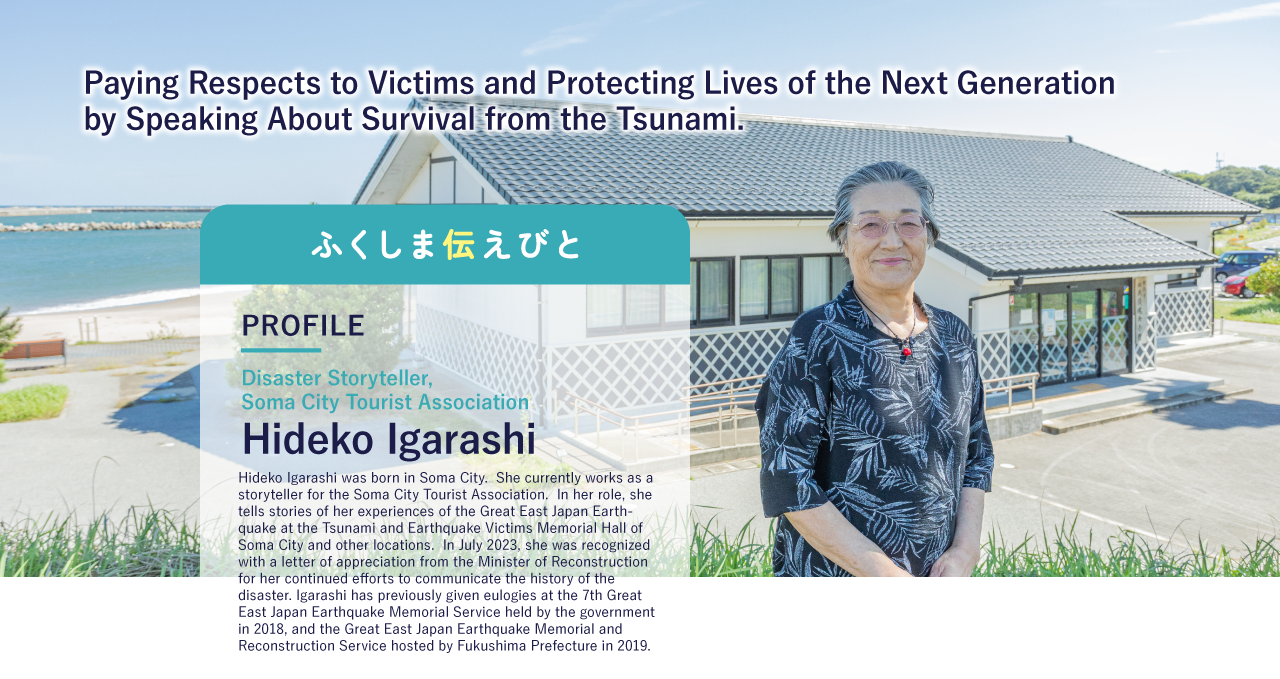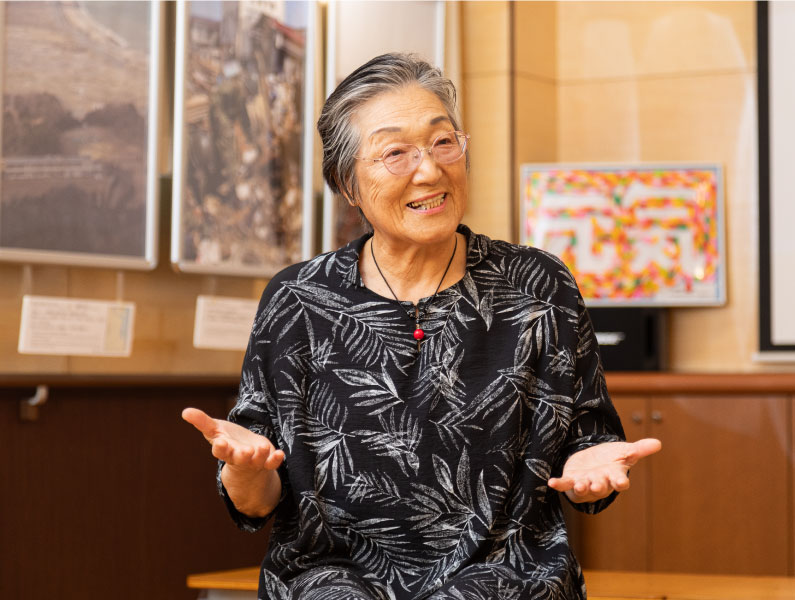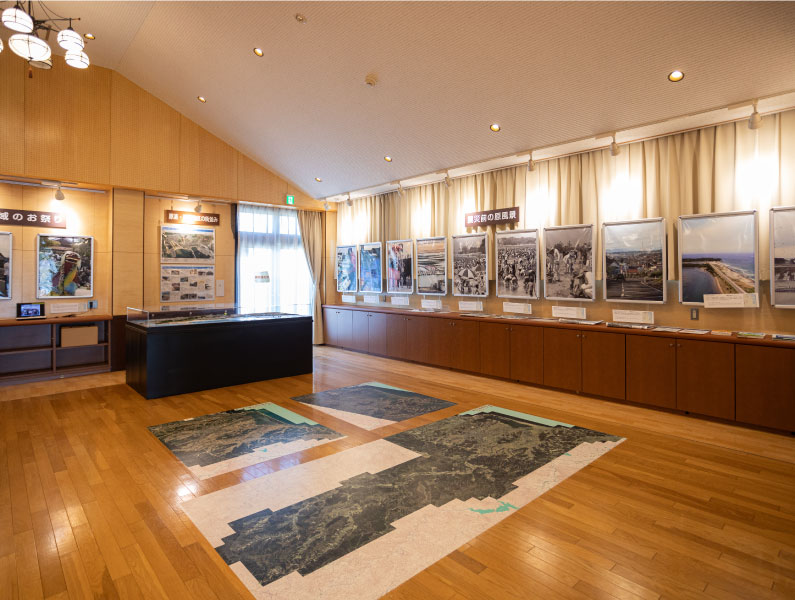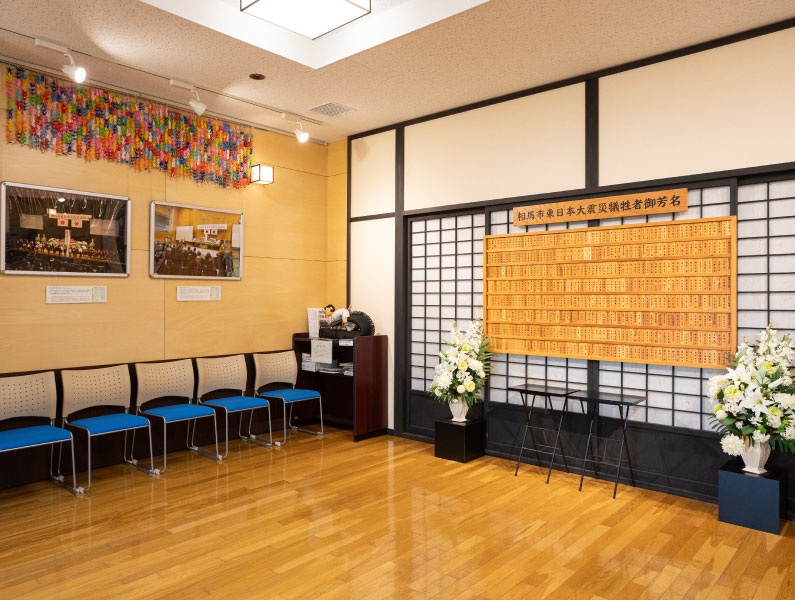
A Miraculous Escape from the Clutches of the Tsunami.
A Committed Storyteller Recounting Experiences both Inside and Outside the Prefecture.
Haragama Obama Beach in the north of Soma City is a bustling getaway spot for many families in the summer. On top of a small hill that overlooks the shimmering blue sea beyond the beach is the Tsunami and Earthquake Victims Memorial Hall of Soma City. As the name suggests, Soma City was devastated by a nine-meter-high tsunami following the earthquake, and 458 people mainly from the Haragama-Obama and Isobe areas lost their lives to the disaster. It was here that Igarashi was swept up by a black tsunami wave. Despite being buried in earth and sand up to her neck, she miraculously survived the horrifying ordeal. Today, she works as a disaster storyteller, recounting her experiences to visitors at the Memorial Hall and various other locations. As with her eulogies at memorial services hosted by the national government and Fukushima Prefecture, she is committed to carrying forward learnings from the disaster. In July 2023, her efforts were recognized with a letter of appreciation from the Minister of Reconstruction. Igarashi laughs as she says, “Am I bragging about receiving the letter? Of course I am!”

Igarashi recounting her experiences in a heartfelt manner, but making sure to include some laughter.
Not Being Able to Say ‘Run Away’ and the Anger That Remains Today.
Today, Igarashi talks with a smile, but for a while after the disaster, talking about her memories of the time was unthinkable. “When I tried to speak about it I would just cry. I was so angry with myself that I couldn’t tell people to run away.” Before the disaster, Igarashi managed a lodging right by Haragama Obama Beach. At 14:46 on the day of the disaster, the ground started shaking violently alongside rumbling noises from the land and the sea. The lodging was fully booked, and Igarashi had no time to think what with preparations for the guests’ dinner. She says, “I’d heard that the tide goes out before a tsunami, but there was no change. Two days before there was an earthquake in Miyagi Prefecture with a lower five level on the intensity scale, but it had no impact on Soma City. Rather than running away, I was more worried about our customers arriving.” Shortly after, Igarashi was told that a huge tsunami had hit land in Iwate and Miyagi, but she still stayed where she was. She only started moving when asked to by a local fire brigade. But by the time she had left her home with her husband and disabled uncle, water was already running down the street.

Inside the 2011 Tsunami and Earthquake Victims Memorial Hall of Soma City. Exhibits show the landscape in Soma City prior to the disaster alongside the post-disaster damage.
Accepting the Burden of Survival by Talking About Her Experiences, and Passing on Learnings to the Next Generation.
Igarashi had no clothes on when she was found, with only her head emerged from the surrounding rubble. “It was cold. I was resigned to dying there in my unsightly state,” she says. Igarashi was told that if she was left any longer, she most likely would have died of hypothermia. For several months thereafter, her mind was completely blank and she found it hard to confront reality. “My daughter asked me why I didn’t run away sooner. Apparently she thought I would. I’m angry with myself because I might have been able to save others if I had run away earlier. I still blame myself today.” After being interviewed by a newspaper, however, she was able to gradually organize her thoughts, ultimately enabling her to do the work she does today. “One person who came to listen to my talk said that the gods had saved me because they needed me. Today I’ve realized that talking about my experience is a way to remember those who have passed.” Recounting her own experience has enabled Igarashi to accept her survival, and she is now using her learnings to protect the next generation. “I want to tell people about the past using my own words. I’ll go wherever I’m asked. I’ll even go abroad if there’s an offer to,” says a smiling Igarashi. Sometimes dignified and sometimes enjoying the moment, there is no doubt that those who have passed are watching over and supporting Igarashi’s activities.

The names of those who died in the disaster in Soma City are listed on a wall in the Memorial Hall. On the day of our visit, flowers had been placed by the victims’ names.
2011 Tsunami and Earthquake Victims Memorial Hall of Soma City
〒976-0021
270 Otsu, Haragama, Soma City, Fukushima Prefecture
TEL:0244-32-1366



